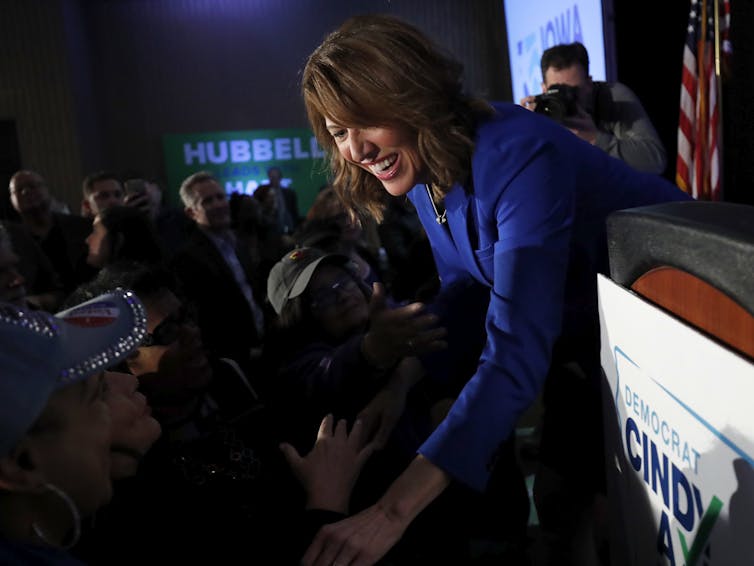Left behind: The midterm view from Iowa
- Written by Paul Lasley, Professor of sociology, Iowa State University
Now that the midterm election is over, many of my fellow Iowans are looking forward to resuming normal daily activities, finishing up the fall harvest, raking their lawns without the nuisance of political yard signs and watching television without the constant barrage of negative campaign ads.
I’ve spent my career studying trends in rural[1] culture and what these trends suggest about the future of rural communities.
What did the 2018 election tell us about rural America? The view from Iowa may provide some answers.
This midterm election has taken a toll on the civility of “Iowa nice.”[2] The hard-fought political battles that energized voters indicate that Americans, regardless of political party affiliation, are concerned about the future of the country[3]. This is especially true in many parts of rural America where the lack of opportunities has resulted in chronic loss of young people to urban areas, higher rates of poverty and an increasingly older, dependent population[4].
The bleak outlook in many rural communities across the Midwest has led to the consolidation of schools[5] and churches[6], along with the closing of many businesses[7] and hospitals[8]. For nearly 40 years, I have studied these trends and have great empathy for those who feel they have been “left behind.”
 Democrat Cindy Axne will represent Iowa in the House of Representatives.
AP/Matthew Putney)[9]
Democrat Cindy Axne will represent Iowa in the House of Representatives.
AP/Matthew Putney)[9]
So when rural voters read of booming urban economies, record highs on the stock market and low unemployment rates, this does not match their observations of what’s happening in their communities, where almost 40 percent of Iowans can’t afford the basic costs[10] of living. That energized them to participate in the election[11].
Some common themes that played a big role in yesterday’s election in Iowa: the need for affordable health care[12] especially among low-income residents and the elderly, the need to invest in education[13] for the workforce of the future[14] and restoring a sense of shared economic prosperity.
There is one way in which Iowa is perfectly in tune with a national trend[15] – the one that elected record numbers of women to the House. Voters elected the state’s first two women to the House of Representatives[16].
It seems we will only have a short reprieve from electoral politics here in Iowa, given that the numerous Democratic challengers for the presidency have already started their visits to the state. I’d better get to raking my lawn.
References
- ^ spent my career studying trends in rural (soc.iastate.edu)
- ^ the civility of “Iowa nice.” (www.smh.com.au)
- ^ are concerned about the future of the country (www.politico.com)
- ^ and an increasingly older, dependent population (www.ers.usda.gov)
- ^ consolidation of schools (www.nytimes.com)
- ^ and churches (psmag.com)
- ^ closing of many businesses (www.bisnow.com)
- ^ and hospitals (www.beckershospitalreview.com)
- ^ AP/Matthew Putney) (www.apimages.com)
- ^ 40 percent of Iowans can’t afford the basic costs (www.desmoinesregister.com)
- ^ energized them to participate in the election (www.thegazette.com)
- ^ need for affordable health care (www.thegazette.com)
- ^ need to invest in education (wqad.com)
- ^ the workforce of the future (dailyiowan.com)
- ^ in tune with a national trend (www.axios.com)
- ^ first two women to the House of Representatives (www.desmoinesregister.com)
Authors: Paul Lasley, Professor of sociology, Iowa State University
Read more http://theconversation.com/left-behind-the-midterm-view-from-iowa-106445

